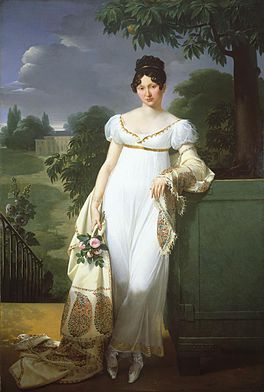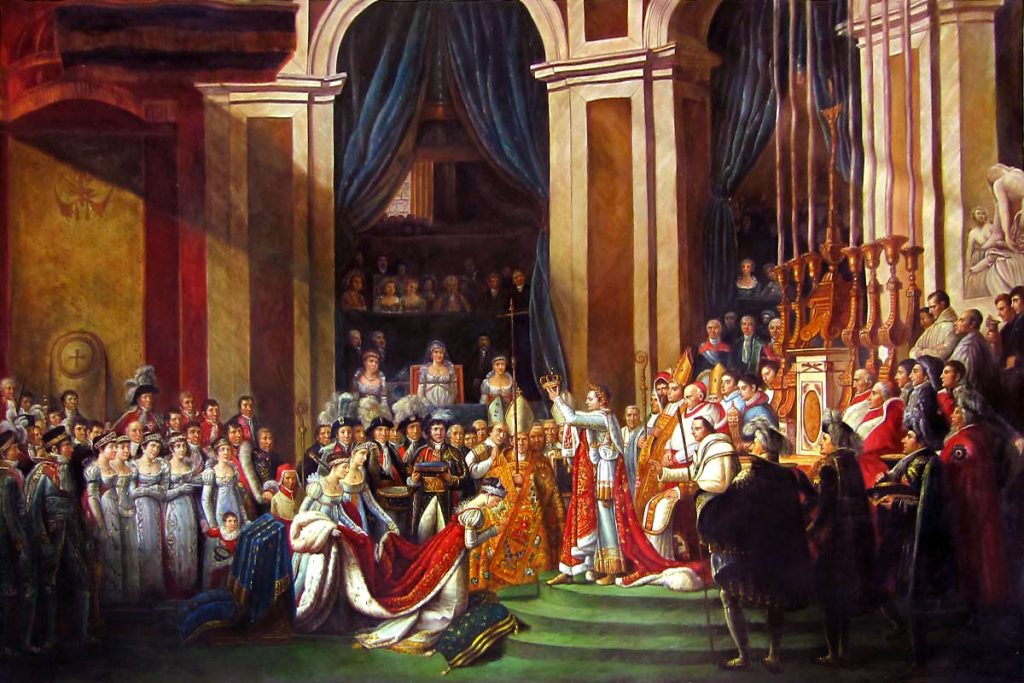Neoclassical Art and fashion

1800 was a revolutionary time in western fashion history. After the French revolution, the former stiff and cone styled dresses of the rococo era turned into more form-fitting outfits with very high waistlines. During this time, fashion, along with the arts, took on neoclassical inspirations. In their aim to reproduce looks from ancient Greece and Rome, women often mistakenly wore white, believing that classical fashion featured primarily white clothing. It was during this time that dresses became much looser with straight flowing skirts in contrast to their large and stiff forms from the previous era. Unlike the frivolous styles from before, natural beauty was heavily emphasized in fashion. Form-fitting clothes now outlined the natural body shape, and undergarments had to be altered to fit this drastic reduction of coverage.

During this time, famous painters like Jaques-Louis David and Delacroix emerged to partake in the neoclassical trend. Just like fashion, art during this time drew inspiration from the Ancient Greek and Roman trends in aspects such as their scenes and costumes. This movement was based on the push against the previously frivolous traits of Rococo styles and held a more natural but still very impactful flare. Colour palettes noticeably reduced in paintings as the emphasis moved to the lines and forms of figures.

Important events such as the French Revolution and the rise of Napoleon were great inspirations to painters like Delacroix, who painted the famous “28th of July: Liberty Leading the People” in 1830. Along with David, who painted many prominent pieces commissioned by Napoleon, such as “Napoleon Crossing the Alps,” and the “Coronation of Napoleon.”

Sites used:
https://www.britannica.com/art/Neoclassicism